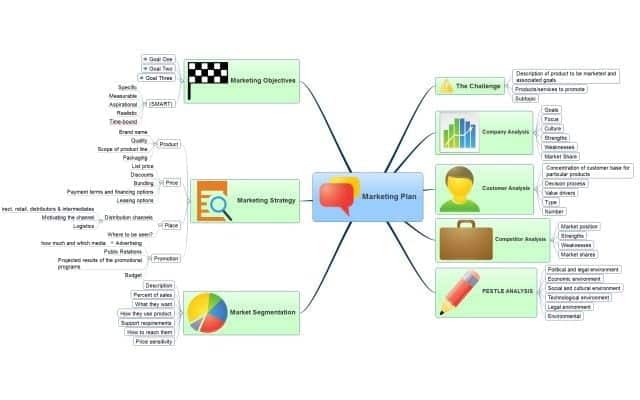In the modern era of social media proliferation, online advertising, and increasingly competitive and global markets for businesses, the role of marketing (and marketing professionals) in helping to understand the business landscape, and defining key strategic plans is perhaps more important than ever before. However, marketing is too often seen as a one-way process, whereby the organization‘ markets’ the goods or services outwards to an audience who may (or may not) be interested. Even worse, marketing is sometimes simply equated with advertising.
Research as the first step
What is often missed is the key role that marketing can (and should) play in assessing and understanding the broader operating environment, before any decisions about what to put out into the world are made. Before you decide how to market your product, you need to know where the most likely buyers are going to be, or whether there are any likely buyers in the first place. Before you decide to leap into every social media platform on the planet, you need to understand whether you are going to be able to cut through the noise and be heard. And of course, you need to consider at all times what your competitors are doing, and what broader macro trends in the world might influence the execution of any fantastic plan that you put together. In essence, before you commit a single penny to that pay-per-click campaign… you need to do your research!
Mind mapping software is often referenced as an excellent research tool, and in the Biggerplate Annual Mind Map Report 2015, ‘Compiling Research and Information’ was identified as the second most common task performed with mind mapping software in a normal week. The ability of software like iMindQ to help you capture, organize, and make sense of vast amounts of information is extremely powerful. By building a single mind map assessment of your current business and/or marketing landscape, you can not only give yourself (and others) an excellent helicopter view of the current landscape, but also zoom right into whichever areas appear most important.
Facing challenges
However, some key challenges remain – the amount of time required to conduct the research and construct the mind map, along with the need to ensure you are asking and answering all of the right questions! This Marketing Plan template for iMindQ potentially assists with several of these challenges and can lead you towards a comprehensive understanding of the external marketing environment, and a thorough investigation of how your business might position itself in marketing terms to achieve the best results.
This mind map template gives you an extremely comprehensive set of starting points that will encourage and enable you and your team to analyze your own business, your competitors, and the wider operating environment through a PESTLE analysis branch, which is extremely valuable in ensuring everyone is aware of the macro trends that may impact upon your business.
Customer analysis
More importantly, there is also an opportunity for customer analysis, something that is surprisingly overlooked many times because people assume “we know who our customers are by now”. Regardless of what you think you know about your customers, it is vital that you constantly test your assumptions, and ask yourself challenging questions like whether your current customers are the right customers, or indeed, the best you could do. Many marketing plans are shaped by implicit assumptions around who our customers are, and what we know works best. But when was the last time you got a group of customers in a room and asked their actual opinions? Feedback surveys and follow-up questionnaires are one thing, but ensuring your understanding of customer sentiment is up to date is essential, and again, this template provides a solid starting point for this.
Competitor analysis
When building out sections of the mind map about competitors, or the wider marketing environment, you may find that the map soon grows significantly as you add lots of information in your subtopics. If this starts to happen, it is worth considering whether you can use certain features within iMindQ to avoid the surface level of your mind map becoming too cluttered. Rather than including long sentences or chunks of text in your topics, think about using the Notes feature to ensure you can record this key information, but keep the surface level of your mind map nice and manageable. Similarly, saving web references as Hyperlinks within topics (rather than putting the information into your map) is a good way to build out a comprehensive and easy to manage research map where all of the key information is right at your fingertips, no matter how large the mind map gets.
Remember, you can also use links to other files. If you have a huge and comprehensive analysis document on one of your competitors, or a particular customer segment, why not link from the mind map to this document, and simply add the key headlines to your mind map rather than potentially duplicating content.
In essence, this marketing plan should (and can) be fluid, adaptable, and dynamic reference point for your marketing activities, and should not really be seen as a ‘finished’ document at any stage, because so many things will continue to evolve and change over time. Importantly, however, this mind map can adapt, update, and change with them, ensuring you always have full sight of your marketing landscape, and instant access to all the key information that you need to make informed decisions about how to allocate your marketing efforts.
About the author
Liam is the founder of the global mind map library and community at Biggerplate.com, where you can find thousands of mind map templates and examples to view and download for your own use.






